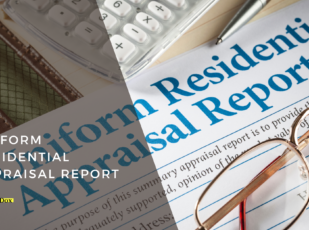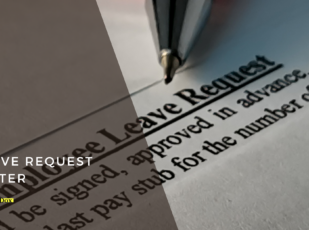
Terms & Conditions Template
14 Downloads
IT and Media
December 12, 2024
Sayantani Dutta
In the modern age, it has become critical to create robust, all-encompassing Terms & Conditions for defining the rules, responsibilities, and legal obligations of using a website, service, or even an app. The Terms and Conditions Template is a structure that guides the creation of a personalized policy that is legally binding. This policy is a contract between a business and its users. It is instrumental in laying out the legal groundwork to protect not just the business, but both the parties.
This article will talk about the significance of Terms & Conditions, their impact on your business, and the risks of not having a personalized policy with tailored content. We will also discuss the advantages of using FreshDox.com’s customization template for this use which allows you to add and remove clauses based on what your business, website, service, or app is all about.
What are the Terms and Conditions?
The Terms and Conditions Policy is a legal document outlining the rules users must agree to in order to use your website, app, or service. It covers everything from user rights, acceptable use policies, account termination procedures, and copyright information to any warranty (or lack thereof), limitation of liability, and intellectual property rights. Whether you run an ecommerce store or have a website for your business serving information, there is an intended use that has to be followed to avoid problems and any legal disputes down the line. This document outlines all of that and more.
This document or page on your website is critical for setting clear expectations and managing user behavior—thereby safeguarding the business and improving the user experience.
Without this document, it is not like your users will have no clue how to use your website. The end-user today knows their rights. But what will you do in case of an issue, copyright infringement, or misuse of the website? If you have not got the user to accept your Terms and Conditions in the first place, there is nothing you can do, legally.
The Importance of Terms & Conditions
Terms and Conditions, often abbreviated as T&Cs, are not just legal jargon tucked away on a website or in a document. They form the backbone of any agreement between a business and its customers, users, or clients. Whether you’re running an e-commerce platform, a service-based website, or even a mobile application, the importance of a robust Terms & Conditions document simply cannot be overstated.
Such a document is fundamental for any online business. These policies or documents cover everything from how to perform checkout, the right way to use the features of your mobile app, and how the data from user accounts is managed—all while adhering to the governing law.
In simpler terms, the Terms and Conditions document clarifies what users can and cannot do.
This forms a legal agreement, which, in turn, acts as a preventative measure against potential misuse of your service or product. The agreement does this by offering protection against liabilities and reducing the risk of disputes as users use your website or services.
In this policy, you are essentially stating user responsibilities, copyright policies, and the process of account termination in explicit terms, for example. And the availability or the reference to the document (for example, by that checkbox confirming that the user has read and accepted the Terms and Conditions) ensures that the users of your platform are aware of the rules. This helps maintain a fair and controlled environment for all parties involved.
Under the applicable law, the Terms and Conditions also have further disclosures, a disclaimer for dispute resolution, custom terms for data protection depending on what information you are collecting, any stipulation on the legal requirement for using the site and its services (a minimum age, for example), or a limitation of liability clause such as you are using the website at your own risk and that the service provider is offering on warranty of any sorts.
Not Having a Good Terms & Conditions Document
Operating without comprehensive Terms & Conditions or using a generic template can expose your business to numerous risks. You see, without a proper agreement, it is quite challenging to enforce rules on your platform. This can lead to misuse, copyright infringement, and other legal issues down the line.
If there is a lack of clear terms, your ability to terminate abusive accounts or defend against any legal claims also becomes very limited. Needless to mention, all this can open your business or website up to unnecessary liabilities and vulnerabilities that bad actors or rogue users can exploit.
The biggest concern is relying on a free terms and conditions generator. Such a document might look fine at first glance, and might cover the essentials—such as the GDPR or CCPA policy, terms on the use of user-generated content, and a termination clause—but ultimately, it might have gaps, which can introduce chinks in the armor.
These boilerplate agreements often do not include custom requirements unique to your business model or industry, or at the very least, do not adequately address them. Moreover, within an industry, different service providers, sellers, or websites might have different use cases and differentiators. If you rely on a typical, free template downloaded from the web, you are getting a structure that does not even consider your unique use cases within your industry. As a result, those use cases are not considered by you (because even your competitors might not have those clauses) and your website terms become exploitable once more.
All this can severely compromise the legal protection and user governance provisions of your business.
Key Elements of a Terms and Conditions Agreement
Just scroll through any terms and conditions page on a website—you are bound to find tons of clauses. As such, it is impossible for us to cover every key aspect. But what we can do for you is offer the broad categories that you must consider while developing your terms and conditions agreement.
Begin with a proper user agreement. The user agreement is a bunch of clauses that act as an introduction. In essence, they outline the acceptance of terms by using the service or website, nothing more. If you are serving users in California, CCPA is important. For Europe, GDPR is critical. Clarify that those protections are in fact in place.
Next, the agreement mentions the correct use of the service, website, or app. The intended use clauses are guidelines on how the service and its content can be legally used. For this clause, the terms and conditions examples include telling users what they are allowed to do and what they cannot do. For example, telling them that all information is protected by copyright.
You will also include information about account management here. These are basically policies regarding account registration, maintenance, and termination. Without clearly specifying these terms, you cannot take action against user accounts. For example, it has to be specified that the user cannot do X or Y. If these prohibited activities are carried out, this will lead to the cancellation of the account. But if you lack this clause in your end-user license agreement, then you have no grounds to terminate the user’s account if they end up doing X or Y. This can land you in trouble where you are constantly seeking (rather expensive) legal advice.
If your website or service has intellectual property of any kind, then your policy needs intellectual property protection rights and clauses for the same. These protect your website’s content, trademarks, copyrights, etc. This indemnification is necessary if you wish to protect everything your company owns because, without it, your IPs are at risk of being misused. The intellectual property clause is important even if you do not have a tangible IP. Some functionality of your website, platform, or tool, for example, can be your intellectual property.
Your agreement should also contain specific liability limitation clauses. These are statements that limit your liability for errors, website downtime, and any third-party links. For example, if you have third-party tools on your website, then you need to clarify that you do not own them. This applies to everything from tracking code and CRM integrations to the payment methods you use. In case they do not work as expected, it is not your fault, basically. The user needs to know this in simple terms.
Not all websites and businesses need this, but it is worth considering to also add rules about acceptable and prohibited behavior on the platform. These are user conduct policies and lay out the ideal use of your website or platform. The user has to abide by these rules to protect their account and access from being terminated.
Disputes are unavoidable at some point. As such, you need to offer dispute resolution clauses in your terms and conditions too. These are procedures for handling disputes, legal or otherwise, including governing law and arbitration. For example, you have to specify that the business owner is only going to negotiate in a particular jurisdiction. As you only know the best about your own jurisdiction, it is not only convenient but also very important to keep things in your control. In the age of social media and higher internet penetration, it is easy for content to be accessed by a number of people from different regions. You cannot be taking trips to different places to resolve disputes.
Lastly, end the policy by introducing your amendments policy. This outlines how changes to the terms will be communicated and implemented. This comes right before the contact information and any other important links—such as the links to the privacy policy or refund policy.
FreshDox.com’s Terms & Conditions Template
The legal intricacies of operating online services require a precise and adaptable Terms and Conditions Template. A lot of website owners often rely on inadequate templates and make their business vulnerable to all sorts of disputes down the line. That is not ideal. You need your own terms, customized to fit your own needs, while respecting the user’s privacy laws.
And it is precisely for that reason that FreshDox.com offers a solution! With our professionally crafted template, which is tailored to cover all necessary legal stipulations of your business, you can rest assured of avoiding problems. Our template is designed to protect your interests while ensuring a fair and clear agreement with your users.
When you subscribe to FreshDox.com, you gain access to a wide variety of legal, business, and professional document templates—including our legally sound Terms & Conditions Template. With a 14-day trial, you can even look around risk-free and check the benefits of our Basic and Premium Plans. Basic Members can download up to three document templates a month, whereas Premium Members enjoy unlimited downloads. We cater to all types and sizes of businesses!
Using our Terms and Conditions Template will empower you to establish a solid, legal foundation for your online platform. This ensures that your business operations are protected, while being 100% transparent and law-abiding. Avoid the pitfalls of operating without this essential agreement—sign up for FreshDox.com today to secure your service, platform, website, or app with our expertly created template!
Related Templates
Discover more templates that align with your needs and preferences.

Ready to Sign Up?
Sign up for FreshDox.com’s 7-day trial and discover why so many individuals and businesses trust us for their legal document template needs.
- Cancel any time
- 7-day free trial
- From 300+ Customer Reviews
















